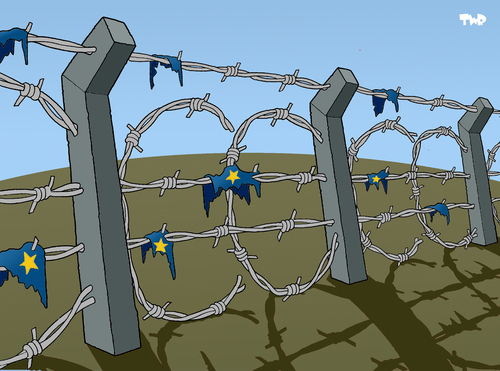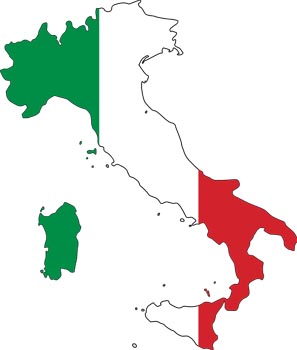By Manel García Biel
The Spanish financial system crisis was caused by the over-indebtedness of financial institutions resulting from over-exposure to real estate which went boom and then bust. To deal with this financial crisis Spain implemented ‘reforms’ , paving the way for the country to obtain a bailout from the EU of 100 billion euros.
These reforms led to:
• The virtual elimination of the savings banks sector that had been hardest hit by the real estate exposure to toxic assets.
• A concentration in the finance sector around the oligopoly formed by Banco Santander, BBVA and CaixaBank.
This crisis and the subsequent financial reform have been beneficial to a few and meant losses for many.
The winners
1. The reform has benefited oligopolists that have concentrated their power in the finance sector with the help of large amounts of state aid
2. Also benefiting are the former managers of now defunct financial institutions that for many years received substantial rewards and whom so far no one has held to account for mismanagement that led to the collapse/disappearance of numerous financial institutions.
3. Regulators, especially the Governors of the Bank of Spain, Mr. Caruana and Fernández Ordóñez, who are responsible for their negligent supervision that has led to the crisis of the financial system, without paying any price for their negligence.
4. Policymakers in the governments led by [former Popular Party prime minister] Aznar and [former Socialist prime minister] Zapatero that not only failed to prevent the “housing bubble” and the over-indebtedness of financial institutions, but encouraged it. It appears that politicians never pay for their actions.
5. The real estate companies, especially the larger ones that have managed to pay off debts by donating to financial institutions their undesirable toxic assets
The losers
a. – The whole of society that is now responsible for an illegitimate debt because it is the private debt of financial institutions, which has been transformed into public debt, ie the debt of the entire citizenry.
b. – The owners of [high risk] preference shares* and subordinated debt** of financial institutions, and small shareholders of the affected institutions, such as Bankia Banca Civica, or those who have seen their savings reduced or liquidated.
c. – The financial sector workers, between 25,000 and 50,000 of whom have lost or will lose their jobs as a result of the mismanagement of the bank directors.
d. – The non-profit sector, like cooperatives, small farmers and artisans, that as a result of the disappearance of the savings banks, will face financial exclusion because they are not profitable customers for the [big] banks that are left. This exclusion also be driven by the disappearance of caja and bank branches in many towns .
e. – Lack of funds for institutions, especially the Third Sector, which is funded largely through the ‘social dividend’ from the social work of the cajas.
f. – Families and small and medium enterprises, the productive economy, which will continue to lack credit that has been greatly reduced by existing financial institutions for which the primary objective is not credit but to maintain a healthy balance. This means much less credit at much more expensive rates.
g. – Evicted families or individuals, that contrary that in contrast to real estate companies not only lost their homes but must keep paying the debt interest. It is estimated that since 2008 there have been about 400,000 evictions, with 46,500 in the first quarter of 2012 alone. And these evictions do not affect single individuals but whole families. The problem is so serious that they have collected over a million signatures for a citizens’ bill, a popular legislative initiative, or ILP, to halt evictions of homeowners who are behind on their mortgage payments. Unfortunately it seems that this will be rejected.
The stark reality is that the financial system reform has been implemented for the benefit of large financial institutions at the expense of the interests of all citizens.
And let’s be clear that the major banks have not overcome the crisis by doing the right things. By virtue of their size or by diversifying, they have saved themselves and so now are benefiting from the crisis. But they made the same errors as other financial institutions. That is, the Bank of Santander, BBVA and CaixaBank lent to developers whose businesses have failed, they provided credit for inflated assets, they sold savers [high-risk] preference shares and subordinated debt, they have deceived their clients and nobody is holding them accountable. These financial institutions remain in crisis, but enjoy generous government assistance. And while taking over other financial institutions, the three major banks lay off staff and closes branches. Why have they been given state support? Precisely to reduce ‘capacity’, that is cut staff and branches.
Meanwhile two of these three oligopolistic banks are the main shareholders of the “bad bank” to which all Spain’s financial institutions sold their toxic assets at a low price, which means that in the medium to long term, there may be money to be made, and if not, there’s no doubt that they will come asking again for a publicly-funded bail out.
So the policies of privatized profits and socialized losses roll on.
Why did they not create a strong nationalized bank out of the crisis-hit financial institutions, transferring the toxic assets into a public body to make housing available for sale or rent at socially acceptable prices, and using the public bank to feed credit to individuals and the productive economy?
Again, policies to tackle the financial crisis follow the same principle as other policies to cope with the economic crisis. The burden of costs is placed on the backs of the majority of citizens, while the most privileged in society are protected, or are even allowed to profit from the crisis.
Nueva Tribuna 11.2.2013
Translation by Revolting Europe
Notes:
*Most Spanish banks sold preferential shares in the early months of Europe’s debt crisis, to increase solvency ratios under stricter regulatory demands. They stepped up their marketing of these products from 2008, embarking on aggressive campaigns that often involved cold-calling customers. Preferential shares are half-way between a share and a bond. They do not mature, are not protected by the state’s deposit guarantee fund and stop paying out a coupon if the company falls into losses. In a 2006 Caixanova internal document seen by Reuters, management describe preferential shares as the ‘financial lung’ of the business, enabling the bank to shore up its capital and embark on an ambitious global expansion plan.In the event of a bankruptcy, preferential shareholders are at the back of the queue, behind bondholders. Banks throughout Europe sold preferential shares. In Spain, banks pushed them as safe, fixed-term deposits from which customers could get their money out quickly. (Reuters )
**Subordinated debt – Debt over which senior debt takes priority. In the event of bankruptcy, subordinated debtholders receive payment only after senior debt claims are paid in full. That is they are the back of the queue
























Reblogged this on regionaleurope.
Posted by Regional Europe | February 20, 2013, 12:18 pm